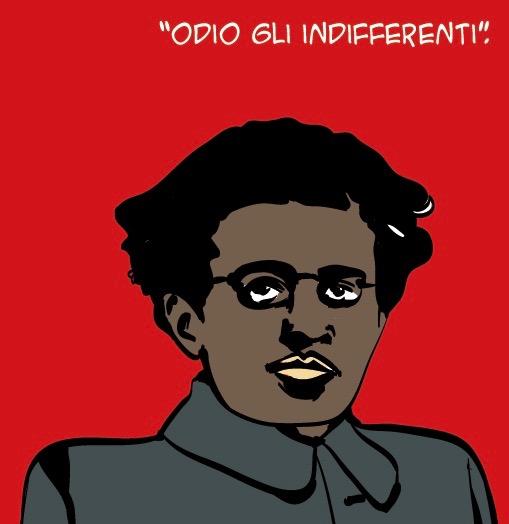Gramsci is Not the Answer
archive


Gramsci is Not the Answer
In his March 2017 contribution to global-e, “The Great Gramsci: Imagining an Alt-Left Project,” Dayan Jayatilleka provides a valuable analysis of the rise of global rightist populism from, as he puts it, a “second-” or “third-world” perspective. His observations are particularly apt with regard to the origins of the recent populist waves.
Jayatilleka is right in asserting that by tending to prioritize the micro-politics of minority and group emancipation, the liberal and progressive strands of the left since the 1990s have—willingly or not—neglected enduring quests for national unity, coherence, and order, leaving these concerns to populists of the right. He is also correct in pointing out1 that the post-“end of history” left may have over-reached in its pursuit of transnational liberalization, de-centralization, and globalization combined with a focus on multi-culturalism, thus losing sight of the middle class and its need for “normal” ground between the local, the national, and the global—particularly in times when it feels threatened by the widening divide between the “winners and losers” of globalization. Finally, Jayatilleka’s plea for a leftist approach aiming to re-integrate the notions of nationalism and populism, to return to the idea of the left as a “people’s” party, seems crucial; most moderate intellectuals endorse lively democratic debate in which big people’s parties on both sides are constantly forced to dialogue and forge alliances within their respective wings.
Thus Jayatilleka’s call for a new “populist nationalism” of the left as an alternative to rightist populism is an idea that deserves serious discussion. Something similar is proposed by parts of the left wing of European social democratic parties.2 Yet I shall argue below that Jayatilleka’s proposal to realize this vision in the footsteps of Italian philosopher Antonio Gramsci is venturing down the wrong path.
Gramsci: A disputed approach
Gramsci's idea of a populist leftist nationalism was meant as a cure for the Italy of his era—to enable the left to compete with the enduring ideological and political power of the Catholic Church and its Christian-Democratic representatives, who for most of national history since 1861 have held the political majority. Gramsci’s approach has to be read in the context of the second half of the 19th and the first half of the 20th centuries, when the influence of early German nationalist (later, pre-fascist) philosophy was strong and, more importantly, the proverbially “weak” Italian nation state was constantly challenged by the Church3 and contributed to a basic mistrust among the people through government policies such as over-regulation and over-taxation.
Against this backdrop, Gramsci tried to reconcile the tensions between the people and the state through a leftist nationalism of the masses, aiming to integrate liberal and national components. But for reasons that include his tendencies toward radicalization and, if less openly, toward bureaucratic centralism, Gramsci never succeeded in shaping a model that could fully satisfy the Italian left. On the contrary, he was always contested within his own party. The dispute between nationalist (centralist, unification-oriented) and liberal (minority, de-centralizing, differentiation-oriented) currents of the left has been a constituent part of the history of the Italian democracy since the end of WWII, and Gramsci’s legacy has been a force of continuing schism and reconciliation, inspiring new actors to enter the same old debate: how to position the left between the need for nationalist populism and the need to remain open to all citizens and groups. Meanwhile, the anti-centralist critique of Gramsci has been instrumental in the rise of a progressive left since the 1960s, which has succeeded in liberalizing and differentiating projects like the implementation of South Tyrolean regional autonomy in 1972, today considered a model of cultural de-centralization and ethnic pacification.
for reasons that include his tendencies toward radicalization and, if less openly, toward bureaucratic centralism, Gramsci never succeeded in shaping a model that could fully satisfy the Italian left.
Therefore, while Jayatilleka rightly calls for integration of “soft” nationalism and populism into the self-conception of the left, and while it is right to suggest that Gramsci needs to be re-discovered as a vantage point on the present moment, at least in his homeland he would hardly be seen as an example when it comes to solutions. All in all, Gramsci may serve best for analyzing contradictions within the left that seem to re-surface today under the pressure of rightist populism.

Radicalization inherent in the foundations of Gramsci’s thought
A second problem when re-discovering Gramsci for the present lies in the radical tendencies of his thought. The young Gramsci in particular, with his flamboyant and militant idealism, reflects one of the central ambiguities of populist politics and ideology: group affiliation and the need to take sides. Populism generates divisions by depicting the “choice” between divergent political stripes as a prerequisite of “cleaning up” a given system.
If Donald Trump, Marine Le Pen, Viktor Orbán, Heinz-Christian Strache, Frauke Petry, or Gert Wijlders are each unique contemporary political expressions of mobilizing the masses through the battle cry of “us versus them,” the young Gramsci was an early and to some extent still “innocent” proponent of such an approach. This makes him—contrary to what Jayatilleka suggests—not a solution but the embodiment of a constitutive problem of populist feeling: self-empowerment through “taking sides.”
The parallels between the present and the past are many, both in form and content. Like most populists of today, the young Gramsci spoke with an edge—a style once again en vogue. August 2016 marked 100 years since the 26-year old wrote in a letter these enthusiastic words:
“I hate the indifferent. I believe that living means taking sides. Those who really live cannot help being a citizen and a partisan. Indifference and apathy are parasitism, perversion, not life. That is why I hate the indifferent.”4
5 (Actually, many have asked themselves if they could have done more.)
There is another parallel between Gramsci’s 100-year old words and the present. In the letter quoted above, accountability is Gramsci’s great demand. The need to implement it against what he sees as “irresponsible” actions of the historical predecessors makes him seem merciless, fanatical—traits also present in the rhetoric of today’s anti-Establishment movements and politicians.
“I also hate the indifferent because… their whimpering… annoys me. I make each one [accountable]: how they have tackled… the task that life has given and gives them every day, what they have done, and especially, what they have not done. And I feel I have the right to be inexorable and not squander my compassion… not sharing my tears with them.”6
Gramsci arrives at his militant conclusions in a mood not dissimilar to the euphoria that accompanied some recent populist victories:
“I am a partisan, I am alive, I feel the pulse of the activity of the future city that those on my side are building... Nobody in it is looking from the window [at] the sacrifice… of a few.7
The evocation of a “future city,” typical of most Western populist movements, is an incitement to the masses, but at the same time it is the transformation of “political subjectivity”8 into belonging to a particular side (the “new city” is built by “those on my side”), a collectivity, and this is a core contradiction of populism: between an anti-Establishment (“the few”) stance and the re-personalization of politics based on taking sides. Individual empowerment is found in belonging to “the many,” yet the expression of “the many” is the single person, the charismatic “strong man” who alone can “fix” everything.
The evocation of a “future city,” typical of most Western populist movements, is an incitement to the masses, but at the same time it is the transformation of “political subjectivity” into belonging to a particular side...
Observing the trend of current rhetoric, some today seem to feel the sway of unparalleled personal empowerment by taking sides against a system that, in their view, is overdue to be replaced. Others lament that they might not have done enough, and withdraw in the cocoon of depression. But what unifies both groups is the feeling of an urgent need to take sides, rejecting what Gramsci calls “indifference.”
Conclusion
My open-ended conclusion is that while Gramsci’s views have parallels in the current socio-political climate, they are just as much an incitement to civil conflict as are certain expressions of right-wing populists. In many European societies and the U.S., but also in countries like Turkey, citizens are indeed taking sides, tending to create divisive polities: the “two Americas,” the “two Britains,” the “two Frances,” and so on.

Demonstration of the far right Casa Pound Italy movement in Rome, 2016
From the viewpoint of democracy and its core aspiration of balancing sides towards an ongoing process of compromise that takes differences to a common center, Gramsci’s inspired lines have proven to be mostly counter-productive. Even the radical left in Italy would concur. No doubt, Jayatilleka’s essay suggests that parts of the left could be tempted in the current climate to return to Gramsci’s inspiration. On the other hand, set against the present context, Gramsci’s reflections may be most useful for both populists and elitists, liberals and conservatives, as an encouragement to review their rhetoric and undertake some soul-searching.9
Contrary to Gramsci’s incitement to “hate the indifferent” and to “not squander my compassion,” we should help each other overcome indifference by reaching out to each other through what may be the best aspect of populism: an enthusiastic, rising new historical consciousness. If anything, we should take the side of dialogue and reconciliation. The left should not lapse into an ideology of taking sides, clinging to the atmosphere of Europe’s 20th century. Instead, it should give itself more time and continue to search for philosophies that can address the distinctive national and global challenges of our time.
1 Also by non-aligned leftist scholars such as Slavoij Žižek, as early as his “Plea for
2 As seen for example in the choice of Martin Schultz as the candidate of the
the German chancellery.
3 As scholars Antonio Giuseppe Balistreri and Massimo Cacciari have pointed out,
founded by liberals against conservatives and the Church. In order to avoid an
anti-liberal nationalism, the liberals, reluctantly forced to be nation-builders instead
of guardians of small government, conceived and realized Italy as a “weak” state.
As a consequence, the Italian nation state remained dysfunctional over most of its
history, defining the specific problems of the Italian nation state until today.
See: http://www.springer.com/de/book/9783658110239
4 Gramsci: https://elcomunista.net/2017/01/23/antonio-gramsci-i-hate-the-indifferent
5 Ibid.
6 Ibid.
7 Ibid.
8 Slavoj Žižek and Glyn Daly, Conversations with Žižek. Cambridge, UK and Malden, MA:
9 The new centrist movements may be signs of a different approach to “feeling the pulse
new moderate centrist movement in Italy by Angelino Alfano’s center-right in
cooperation with the remnants of Matteo Renzi’s moderate left.



